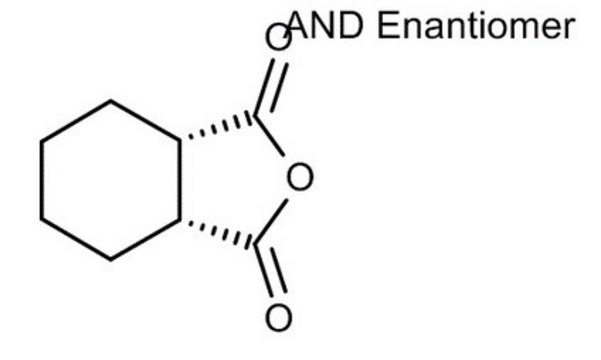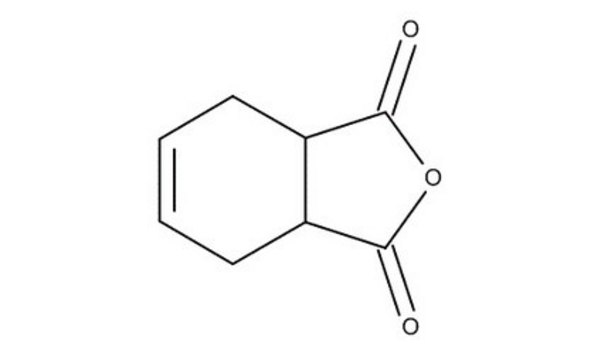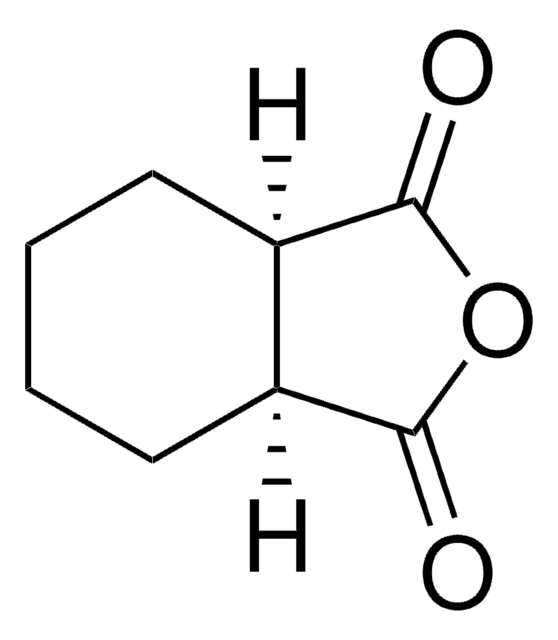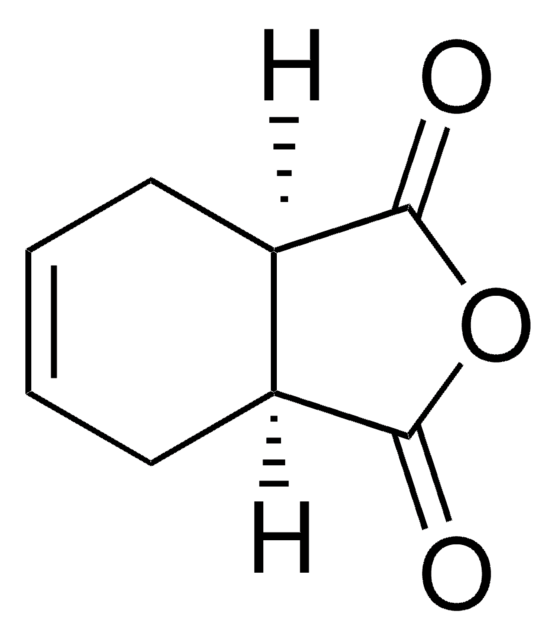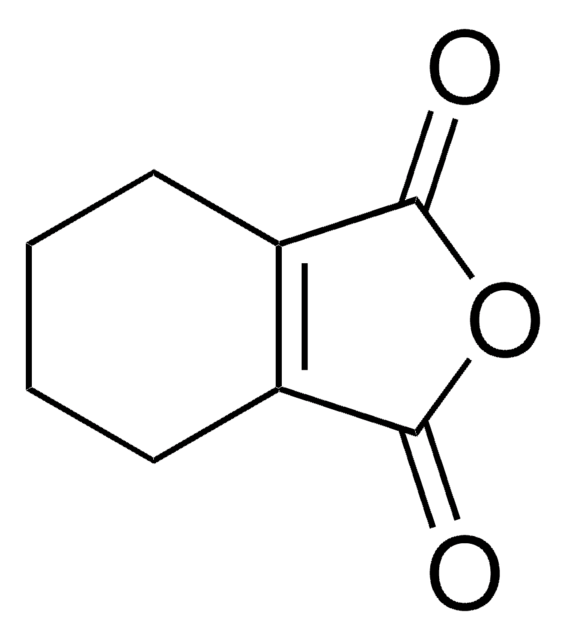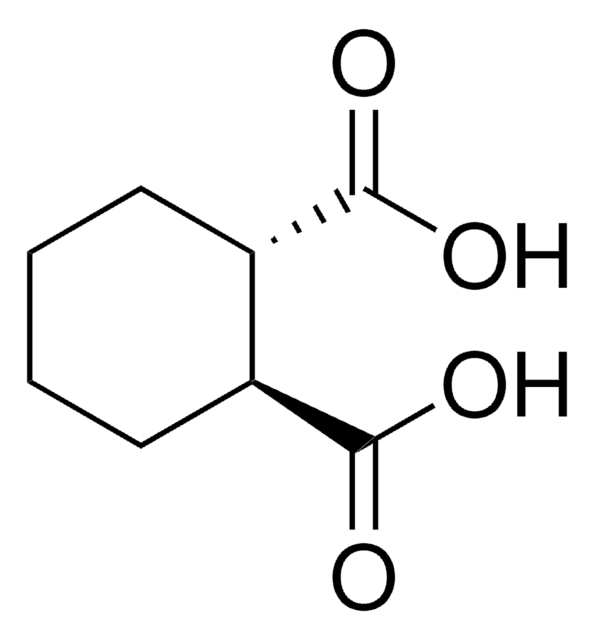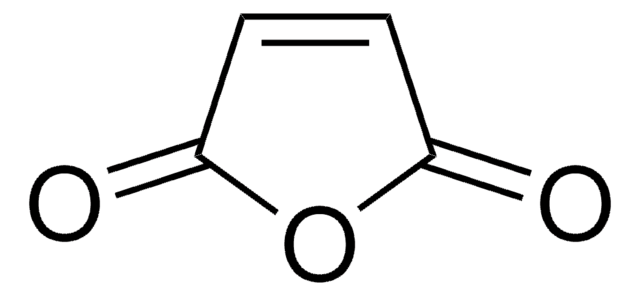149934
Hexahydro-4-methylphthalic anhydride, mixture of cis and trans
96%
Synonym(s):
4-Methyl-1,2-cyclohexanedicarboxylic anhydride
Sign Into View Organizational & Contract Pricing
All Photos(2)
About This Item
Empirical Formula (Hill Notation):
C9H12O3
CAS Number:
Molecular Weight:
168.19
EC Number:
MDL number:
UNSPSC Code:
12162002
PubChem Substance ID:
NACRES:
NA.23
Recommended Products
Quality Level
Assay
96%
refractive index
n20/D 1.477 (lit.)
density
1.162 g/mL at 25 °C (lit.)
SMILES string
CC1CCC2C(C1)C(=O)OC2=O
InChI
1S/C9H12O3/c1-5-2-3-6-7(4-5)9(11)12-8(6)10/h5-7H,2-4H2,1H3
InChI key
FKBMTBAXDISZGN-UHFFFAOYSA-N
Looking for similar products? Visit Product Comparison Guide
Application
- Limonene-based epoxy: Anhydride thermoset reaction study: This research explores the thermosetting reactions of limonene-based epoxy using hexahydro-4-methylphthalic anhydride, illustrating its application in creating environmentally friendly polymers (Couture et al., 2018).
- Metallocene catalysts for the ring-opening co-polymerisation of epoxides and cyclic anhydrides: Discusses the application of metallocene catalysts in ring-opening copolymerization involving hexahydro-4-methylphthalic anhydride, relevant for developing new polymeric materials (Shaw et al., 2022).
- Evaluation of Natural and Modified Castor Oil Incorporation on the Melt Processing and Physico-Chemical Properties of Polylactic Acid: Explores the use of natural oils modified with hexahydro-4-methylphthalic anhydride to enhance the properties of polylactic acid, a study significant in biodegradable plastics (Darie-Niță et al., 2022).
- Synthesis, characterization, and recycling of bio-derivable polyester covalently adaptable networks for industrial composite applications: Investigates the use of hexahydro-4-methylphthalic anhydride in creating adaptable networks for industrial applications, enhancing the sustainability of materials (Wang et al., 2024).
- Epoxidized linseed oils based networks. Case of thermal degradation: Discusses the thermal degradation of networks made from linseed oils cross-linked with hexahydro-4-methylphthalic anhydride, which is pivotal in understanding the stability and life span of bio-based polymers (Richaud et al., 2019).
Signal Word
Danger
Hazard Statements
Precautionary Statements
Hazard Classifications
Eye Dam. 1 - Resp. Sens. 1 - Skin Sens. 1
Storage Class Code
10 - Combustible liquids
WGK
WGK 1
Flash Point(F)
235.4 °F - closed cup
Flash Point(C)
113 °C - closed cup
Personal Protective Equipment
dust mask type N95 (US), Eyeshields, Gloves
Choose from one of the most recent versions:
Already Own This Product?
Find documentation for the products that you have recently purchased in the Document Library.
C H Lindh et al.
International archives of occupational and environmental health, 70(2), 128-132 (1997-01-01)
To investigate whether methylhexahydrophthalic acid (MHHP acid) in urine and plasma can be used as a biomarker for exposure to methylhexahydrophthalic anhydride (MHHPA). MHHPA in air was sampled by Amberlite XAD-2 and analysed by gas chromatography (GC) with flame ionisation
K Tarvainen et al.
Contact dermatitis, 32(4), 204-209 (1995-04-01)
Acid anhydrides are low-molecular-weight chemicals known to cause respiratory irritancy and allergy. Skin allergy has on rare occasions been reported. 2 workers contracted hives and itching on uncovered skin after 2 months exposure to methyltetrahydrophthalic anhydride (MTHPA) and methylhexahydrophthalic anhydride
H Savolainen et al.
Acta pharmacologica et toxicologica, 59(3), 209-213 (1986-09-01)
Male Wistar rats exposed to 5, 10 or 20 p.p.m. 4-methylcyclohexyl-1,6-dicarboxylic acid anhydride vapour for 2-11 weeks showed dose-dependent blood anhydride concentrations. The maximum concentrations were found after two weeks. At five exposure weeks, they were smaller but they did
L Kanerva et al.
Contact dermatitis, 36(1), 34-38 (1997-01-01)
Epoxy resin compounds (ERC) include a large number of chemicals, such as epoxy resins (ER), reactive diluents and hardeners. Many hardeners, e.g., aliphatic polyamines, are well-known sensitizers. Another type of ER hardeners are the phthalic anhydrides, such as methylhexahydrophthalic anhydride
Monica H Kristiansson et al.
Chemical research in toxicology, 15(4), 562-569 (2002-04-16)
Primary structural information of anhydride binding to endogenous proteins is of interest in order to determine the mechanism causing the type-I allergy seen in many anhydride-exposed workers. In addition, studies on specific protein adducts may generate new methods for biological
Our team of scientists has experience in all areas of research including Life Science, Material Science, Chemical Synthesis, Chromatography, Analytical and many others.
Contact Technical Service